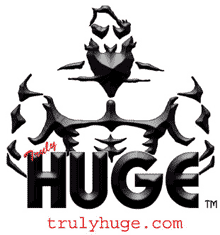
Click Here for Free Bodybuilding and Fitness Magazine Subscription
High Intensity Arm Workout
Pumped Extreme Kre-Alkalyn Creatine Review
Pumped Extreme is by far the best preworkout I have used for obtaining a maximum pump throughout my workout! It gives me thick what looks like a wormfarm veins all over my forearms and what ever muscle group I am working that day! This is by far the best Kre-Alkalyn complex ever put into a product, how it is legal I have no idea! Buy Pumped Extreme today and get PUMPED!
Taylor Valentine
18 year old bodybuilder
For full details go to Pumped Extreme Creatine
You can also order Get Lean Quick by calling 800-635-8970 or 503-648-1898, 10 am to 6 pm PST
Here Is How to Use High-Intensity Training to Build Big Arms

Of all the hundreds of training methodologies available to you, one of the most polarizing is High-Intensity Training, or HIT. Some swear by it, while others claim it’s dangerous and non-productive, but just about everyone has an opinion on the topic.
But what really matters in the gym are results — can HIT help you build big arms?
The truth is, just about any method can help you with your guns if you use it right. With that in mind, here is how to use high-intensity training to build big arms.
Full-Body Workouts
Most versions of HIT have you training your entire body at each workout, and you’re usually in the gym 2-3 times a week for 20-40 minutes at a shot.
This may not seem like a lot of work overall, but full-body workouts can be tough if you’re not used to them. They also force you to work ALL your body parts rather than just the showy ones like chest and arms. This has a couple of benefits for your arms.
First, it allows you to move the most total weight since you’re engaging your largest muscle groups — legs, back, chest.
The second arises because you train your arms near the end of your workout.
Arms Last
Indeed, HIT usually calls for you to start your workout with larger muscle groups and work your way down to the smaller muscles. This saves the smaller muscle groups from overtraining because you don’t have the time or energy to bomb them TOO hard once you’ve wiped out the rest of your body parts.
And, like it or not, arms are among your smaller muscle groups and should be hit with less volume than your major movers.
One Set to Failure
The driving principle behind high-intensity training is — no surprise — intensity.
In the HIT world, this means taking every working set to momentary muscular failure, but performing only one all-out set per exercise. You might consider doing a second movement for chest or back, but you will usually stick to just one set of one exercise each for biceps and triceps when you’re performing full-body HIT workouts.
If you have constructed your program correctly, your arms will get plenty of work from your back and chest exercises, so additional direct arm work beyond the one set to failure won’t be necessary.
Progression
What is necessary is to make sure that you are progressing over time. In particular, you should strive to add weight to the bar or extra reps with the same weight each time you train. If you can curl 100 pounds for 10 reps today, then the next time you train biceps, you need to aim for 11 reps (or more) with 100 pounds OR up the load.
Weight progression over time is the surest path to overall growth and bigger, stronger arms.
Want Even More HIT Information?
If you want to learn ALL about high-intensity training to figure out if it’s the right approach for you, be sure to check out https://www.getbulky.com/high-intensity-training.html.

